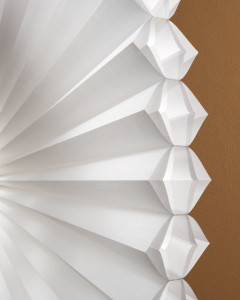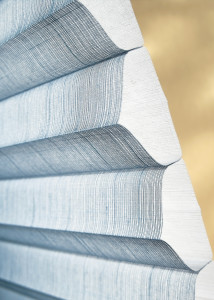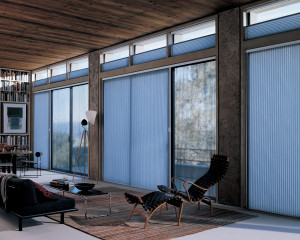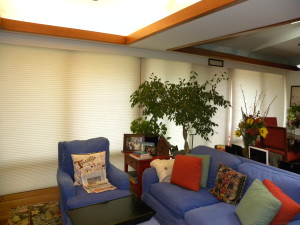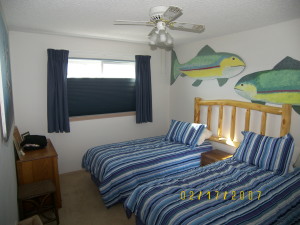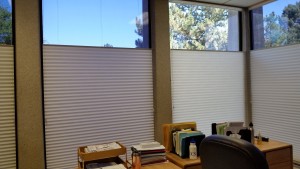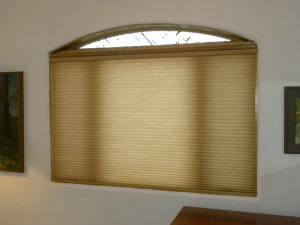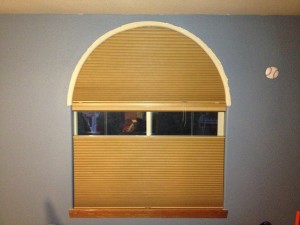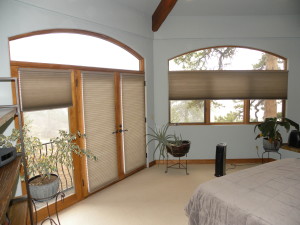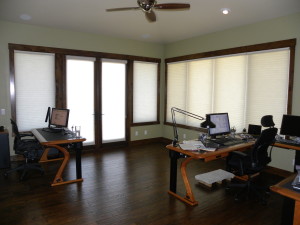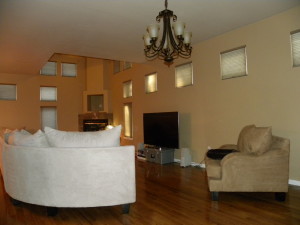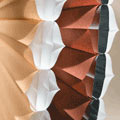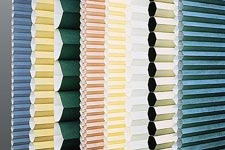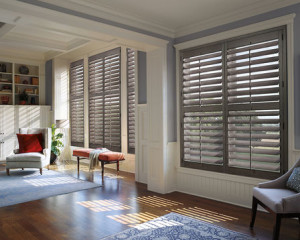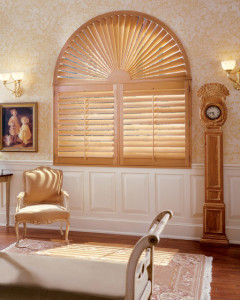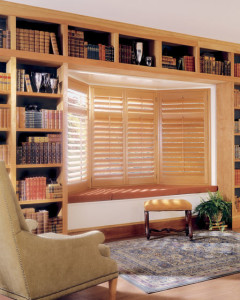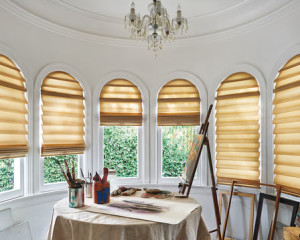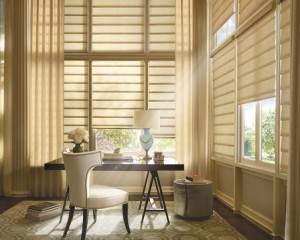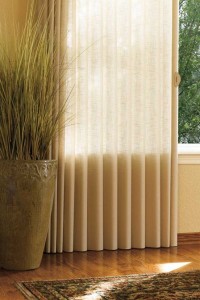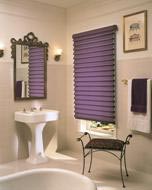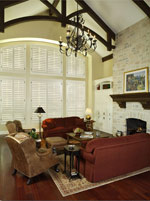The Blind Spot is very knowledgeable about Window Energy Efficiency. We have participated with Excel Energy and other partners in the Excel Energy Makeover Contests for eight years now. We have many contacts in the Energy Audit field, HVAC, Windows, Ducts & Insulation. Let us help you with your next Energy Upgrade. See below how we feel that a home works as a system when it comes to energy.
Click here to see how a home works as a system
Window Energy Theory
- Windows provide FREE light
- A house with good window design is much more efficient than one with no windows at all
- WINDOW COVERINGS greatly enhance the energy benefit of windows
- HEAT is transferred three ways: CONDUCTION, CONVECTION AND RADIATION
- These processes follow a basic law of nature: heat energy tends to move from warmer areas to colder areas. There is no way to get around this fundamental principle; all we can do is slow the processes down.
Conduction – Conduction is the movement of heat through a solid material. Touch a hot skillet and you’ll feel heat conducted from the electric coil through the pan. Heat flows through the glass, spacers (metal strips that separate the panes of glass), and frame of a window in much the same way. Heat will flow from inside your home through the window to the outside. Interrupt the pathway with a less conductive material and you impede the flow of heat. Less conductive materials like insulation do this by trapping dead air between the solid fibers of insulation. Multiple-glazed windows do this by trapping low-conductance gas like argon and krypton in the space between the panes of glass. Thermally resistant spacers and window frames reduce conduction too.
Now add window coverings and you have yet one more barrier to the flow of heat through your windows, as long as the window coverings are installed correctly.
Convection – Convection is another way that heat moves through windows. In a cold climate, heated indoor air rubs against the interior surface of the window glass. The air is cooled, becomes more dense, and drops to the floor. As this stream of air drops to the floor, more warm air rushes to take its place at the glass surface. The cycle, called a convective loop, is self-perpetuating. The cold glass surface methodically strips heat from the indoor air. Sitting on a sofa, you recognize this convective movement as a cold draft and raise the thermostat. Unfortunately, each 1-degree increase in a thermostat setting, increases energy use by 2%! Instead, raise the temperature of the glass. Choose multiple glazings with low-conductance gas fillings, warm-edge spacers and thermally-resistant frames. They raise inboard glass temperatures, slow convection and improve comfort.
Or add properly installed window coverings to impede this process. Properly installed means that you have the “tightest fit possible” inside your window jamb so air cannot easily flow around the sides of your window coverings or down through the top. Additionally, have the bottom rail sit flush on the sill. If it does not reach the sill, the convection above takes place. You can actually feel the draft off your windows if you lift the rail from the sill. Place the rail on the sill and you can noticeably feel less draft (on cold windows).
If your windows coverings are installed outside your jamb, on the trim or on the wall, you can also reduce this convection process by covering the top with a board mounted valance, or cornice that impedes the loss of heat through the top.
Radiation – Radiant transfer is the movement of heat from a warmer body to a cooler body through energy waves. A good absorber is a good emitter. Most wood stoves are black for a good reason. Black absorbs and emits radiation best. You can feel a stove’s radiant heat on your face across a room. In turn, your face feels cool when it radiates (emits) its heat to a cold sheet of window glass. This uncomfortable sensation, like convection, persuades you to boost the thermostat. Radiant heat loss is more than a perception: Clear glass absorbs heat and dumps it outdoors. Absorption and emission potentials of glass can be greatly reduced by placing coatings on glass that reflect specific wavelengths of energy. Low-“E” coatings emit less long-wave heat energy. In cold climates, more heat stays in the house. In hot climates, the heat stays outdoors. Low-E coatings improve the insulating value of window roughly the same as adding an additional pane of glass to a unit. So a double-glazed low-E window works as good as a triple-glazed clear window.
Now add window coverings to the equation and you have another absorber/reflector of the radiation gain. In our Colorado sun, we want to reflect back the sun to the outside in the Summer and use the solar gain from the sun in the Winter.
Seeing is Believing
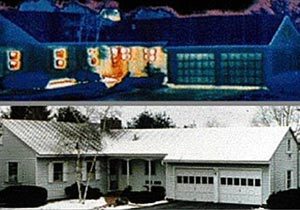
This house was photographed during the winter using thermal photography, a process which exposes higher temperature zones as indicated by the color transitions. You will notice that the areas around the windows are particularly ‘hot’, proving that a significant amount of interior heat is escaping from these portions of the home.
A WORD ABOUT “R-VALUES” :
Over the years much has been stated about R-Values of window coverings. Alas, the industry has not come together to measure in ONE single methodology the R-values of different manufacturers’ products. This leaves the industry with many voices but no real “apple to apple” comparison. Because of this confusion Hunter Douglas will not share actual R-values any longer.
At The Blind Spot Inc., we have sold the Duette® Architella® product by Hunter Douglas, and used it in Energy Makeovers as stated above, and know that this product DOES effectively insulate your home and provide more comfort. Hunter Douglas has had it proven to qualify for the Federal Energy Tax Credit in the Insulation category years ago. We do stand behind this product and do believe that you can get the highest R-value by purchasing the Duette® Architella® 1 ½” Trielle fabrics and the 1 ¼” blackout fabrics.
The Most Energy Efficient Window Coverings
- Architella® Honeycomb Shades
- Thermally Lined Draperies
- Single Cell Honeycomb Shades
- Other products
Honeycomb Shades
Duette® Architella® Honeycomb has earned the highest energy-efficiency rating in the industry and ranks as the nation’s best-selling honeycomb shade due to their cell-within-a-cell single, double or triple thickness air-trapping construction. For French and sliding doors, Duette® with Vertiglide® provides the same honeycomb construction with the shade’s pleats oriented vertically.
New Way
- Lighter, but energy efficient
- Better lifting systems
- Easier to open
- Larger expanses
- Stylish
Don’t forget to cover the Skylights! There are several options for Duette® Shades for covering skylights, which are a big source of heat loss in the winter and heat gain in the summer. Please see the skylight page for more information.
Draperies
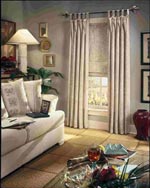 Depending on fabric and lining
Depending on fabric and lining- Can be thermally lined
Other Window Covering Products
Read more here: www.hunterdouglas.com/energy-efficiency

